Flying the Duotone Stash Parawing | First Impressions and Honest Thoughts
Parawings are hitting the market at a fast and furious pace, and Tucker's doing his best to get out on every one so he can share the strengths and weaknesses of each. The Stash (not to be confused with Tucker's hallmark 'stache) is Duotone's first entry into the parawing market, yet it has a unique feature no other parawings use. Duotone is known for releasing innovative, quality products, so how does its new parawing stack up?
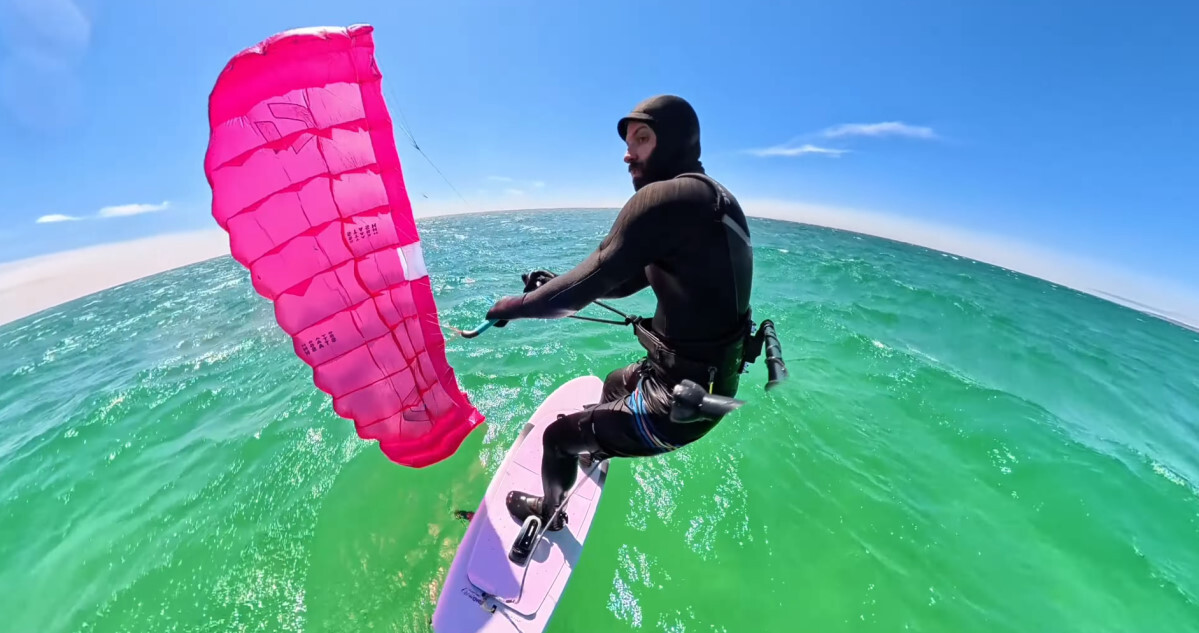
Dual Skin Wingtips
Let's get right into the new feature. Although the canopy is a single skin wing, the wingtips are dual skin. Air enters through the vent at the front and creates a nice, stiff wingtip. If you're riding overpowered or don't have quite the right sail angle, the wingtips on other parawings can fold in and even flap, and these rigid wingtips help prevent that. It does a pretty good job of accomplishing that goal, but it can also create some other issues, which we'll touch on later.

Control Bar and Lines
The bar has a nice grip to it and an oval profile similar to Duotone's wing handles and boom. The top of the bar has a purple stripe to help you find that quickly when you go to redeploy your wing. If you put a harness loop on your bar, it can easily cover up that narrow stripe, but then you'll know that the end with the harness loop is up. The bridle lines are also color coded, with the red at the rear, the blue in the middle, and the grey at the front, so you shouldn't have any trouble determining which way is up when you throw out your wing.
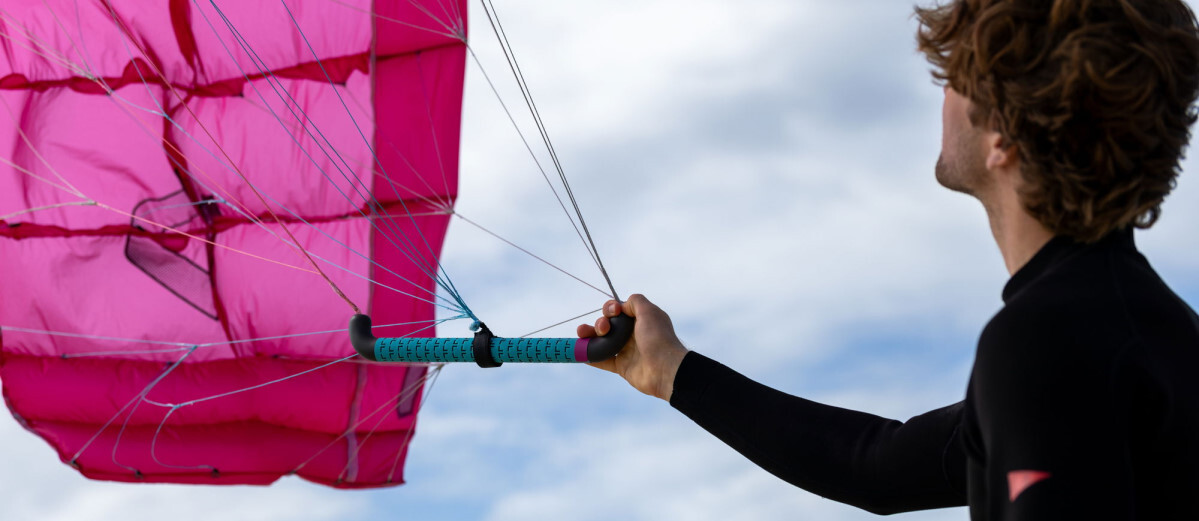
The ends of the bar are rounded, so the lines tend to fall off rather than get hung up on the bar. If you do get a tangle, the color coding helps to unravel that. The lines are pretty thin and soft and are not as stiff as other brands, so they might get tangled a bit easier, but not enough that Tucker found it annoying.
Those soft lines do like to pack down a little smaller, and because they're so thin they feel lighter and slide through the hands easier when you go to stash the wing. Once you get to the knots, the lines are easy to hold on to as you pack down your wing.
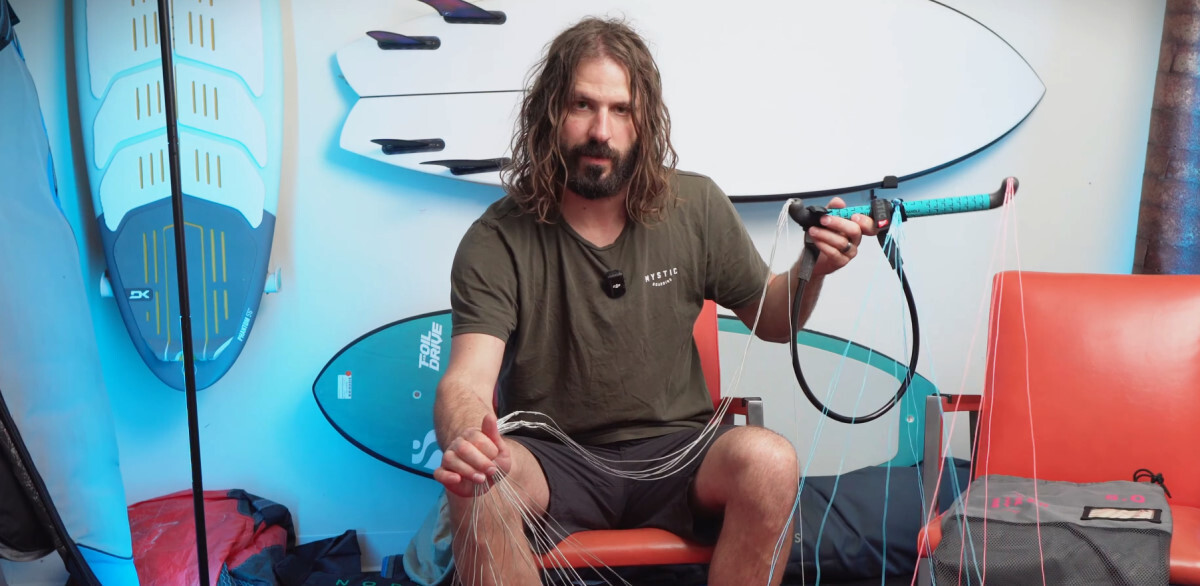
You can detach the bridles from the bar by popping out a plug in the bar ends. There is a loop knot in there that you can untie to release the bridle. You'll need to do this to get a lot of harness loops onto the bar, or if you ever need to replace your bridle. It takes a little effort, but it isn't as hard to do as some of the other brands.
Bag
The bag does everything you need without adding a lot of cost to the parawing. It's a basic stuff sack with venting mesh at the bottom to drain sand and dry your wing, a drawstring closure, a clear ID pocket, and an adjustable strap to sling it over your shoulder. It's sturdy and it gets the job done.
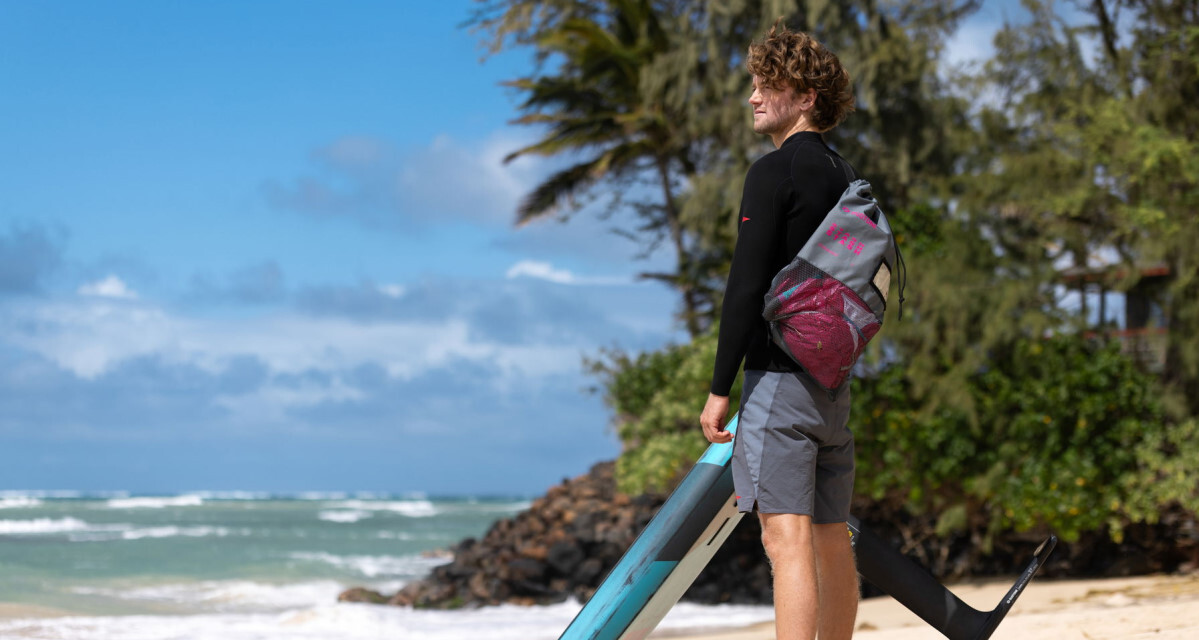
Canopy
The canopy comes in white or magenta, with the front center panel being the opposite color so you can quickly orient your wing. The trailing edge has a thin stripe as well. The wingtips aren't color coded, but as long as you can spot your leading edge panel, that's usually adequate.

The leading edge has some stiffening bands to help give it some shape to make it more efficient, especially when you're going upwind. It also increases the wind range a bit. While you'll want to take some care with these when packing your wing away after a session, you don't need to worry about them too much when you stash the wing on the water. They'll pop right back unless you store them out of shape for a long time. It works well to bring them together like an accordion and then fold up your wing.

Tucker's Review
Tucker loves riding overpowered, so those dual skin wingtips were really nice to help the wing keep its shape. It didn't completely eliminate the issue, but it was noticeably improved.
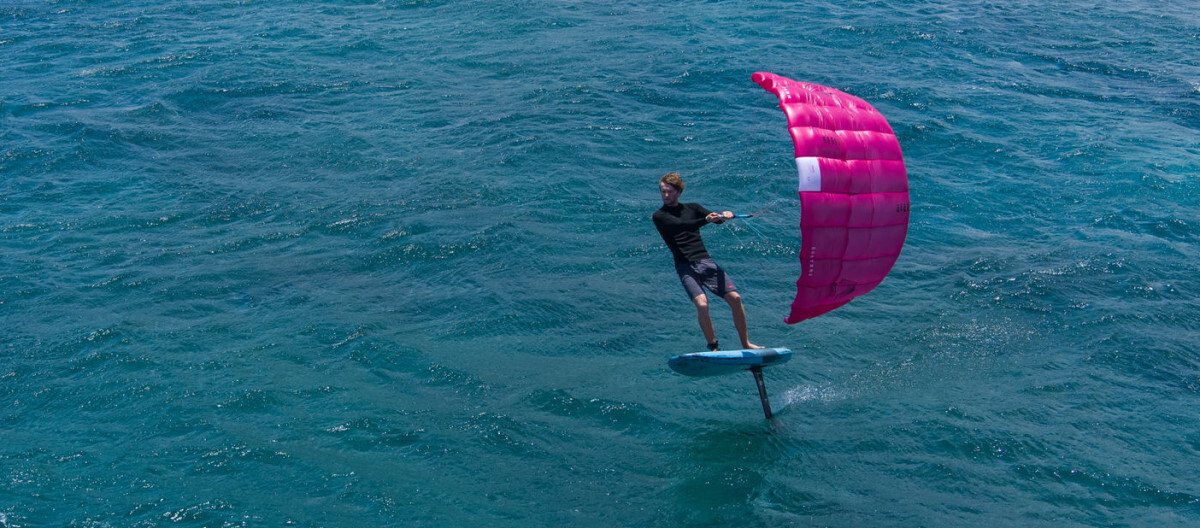
That said, there's definitely some give and take, and it might not be right for everyone. It took slightly longer to stash the wing since there was that pocket of air in there, and it also liked to hold water when the wing got wet. It did shed that water well in high winds, but not as easily in lighter winds. It's also likely that you won't have equal amounts of water in each, so the wing might be a bit off balance until you can get it out. If you spend a lot of time in the water or fly in lighter winds, the benefits of the dual skin wingtips might not outweigh the issues.
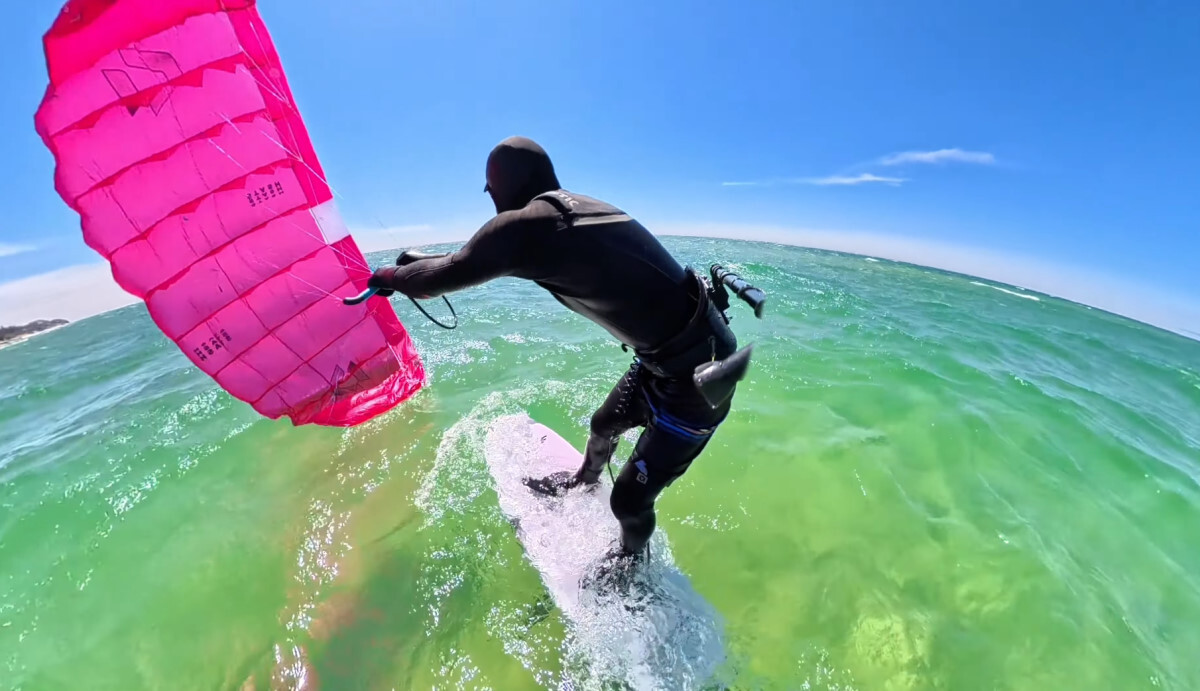
The Stash is a good middle-of-the-road wing. It's relatively easy to fly in the right winds. It's got good range and stability, which is a tough combo to find in a parawing. Most of the time, you'll give up one in favor of the other, but this one strikes a nice balance.
Tucker's Nitpicks
A bit more color coding on both the bar and the wing would have been nice, and the dual skin wingtips do make you weigh the pros and cons for your situation.
Summary
Duotone did a nice job blending the flight characteristics of the Stash, especially for a first release on a product category that hasn't been around very long. It's high quality, and the dual skin wingtip concept does what it's designed to do. It's impressive that Duotone was able to bring something so innovative to the table with their first version of the parawing. It should be a good fit for a lot of people who want a parawing, but give us a call to chat about whether it might be the right wing for you.
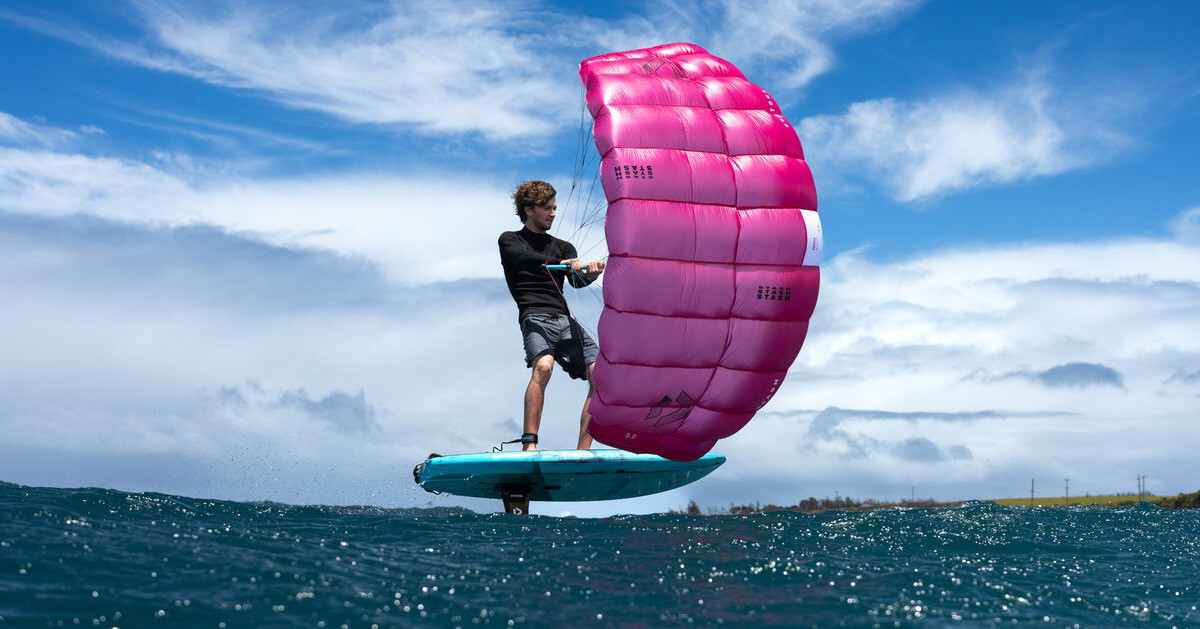
MACkite Subscription Links:
YouTube | Instagram | Spotify Oddcasts
Contact MACkite Below:
800.622.4655 | Kiteboarder@MACkite.com | LIVE Chat Messenger

Recent Posts
-
Slingshot's New One Lock Glide 1525 in Action | Glide, Pump, and Fly!
Slingshot's Glide 1525 for the One Lock System is a fairly big wing, also known as the XXL Glide …2nd Jun 2025 -
Foil Drive V2 Unboxing | What Comes Inside the Case?
MACkite is now shipping the V2 Foil Drive cases, which are included with all Foil Drive Gen2 uni …28th May 2025 -
Flying the Duotone Stash Parawing | First Impressions and Honest Thoughts
Parawings are hitting the market at a fast and furious pace, and Tucker's doing his best to get …28th May 2025




